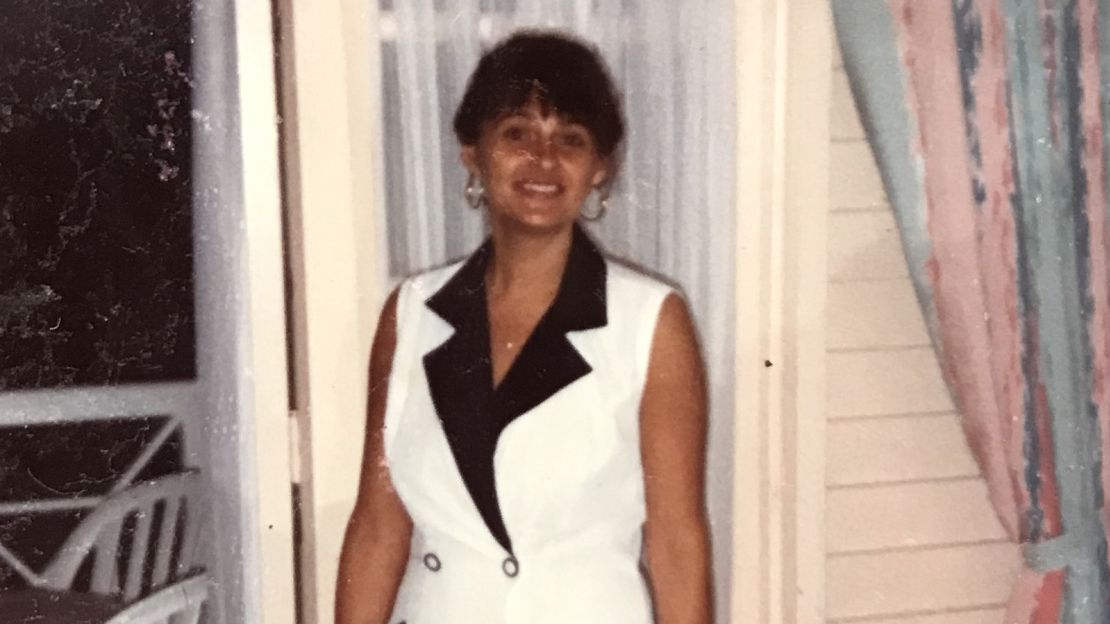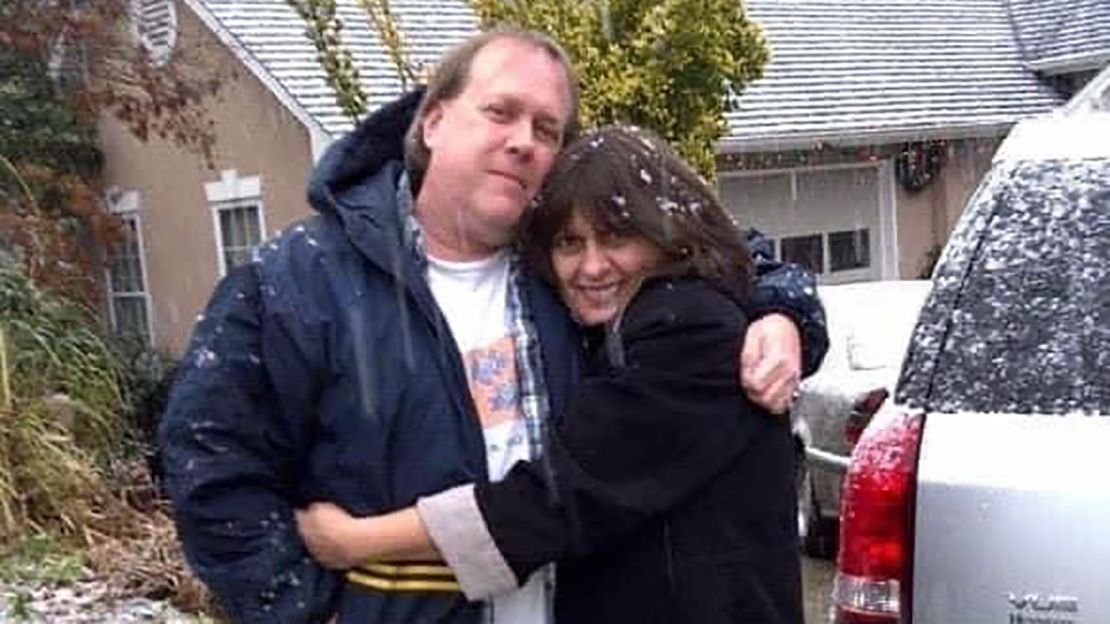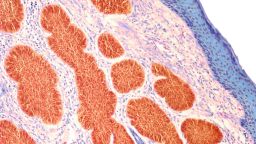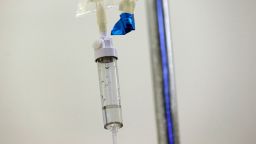Editor’s Note: Ric Ward is a senior writer for CNN International, based in Atlanta. The views expressed in this commentary are his own. View more opinion on CNN.
My family’s world changed on July 6, 2020.
My wife, Lori, had become increasingly tired, lethargic, weak and confused over the previous few days. If you didn’t know better, you’d think she had been taking some kind of illicit drug. She hadn’t. So, it was clear she needed to go to the emergency room.
At the time, the world was in the throes of the Covid-19 pandemic and the restrictions that came with it, like no visitors in the hospital. So, when we got there, I gave Lori a kiss and watched as she was wheeled away down the long hallway.
The next few hours were excruciating for both of us. For me, there was nothing to do but wait, hope and wonder. For Lori, she was run through a myriad of tests and procedures, including a chest X-ray.
When the X-ray results came back, they showed “opacities” in her lower right lung. Often, that indicates pneumonia. So, it’s entirely possible that, based on those results, she could have been treated with antibiotics, given IV fluids and sent home.
But, while in the exam room, Lori fell.
A CT scan of her head was ordered, both to ensure the fall didn’t cause any damage or internal bleeding in her head, and to investigate the possibility of a stroke.
That’s when they showed up: multiple lesions on her brain — and not caused by the fall.
I had called the ER a couple times through the night for updates. Then at 5:15 am, I got a call. I was told about the CT scan and the lesions. The nurse said it wasn’t clear what the lesions were, but they could be signs of brain cancer. I was stunned. The nurse said Lori was being prepped to be transferred to a larger hospital where a neurologist would likely do a biopsy.
When she got to the larger hospital, an MRI was done to get a better look at the lesions. It confirmed what the earlier CT scan had shown. The largest lesion on the right side of her brain was 2.6 cm x 2.3 cm (1 in x 0.9 in). There were at least five more lesions on the left side of her brain.
The biopsy was done the next day and tissue specimens were sent to the pathology lab. When the results came back, our fears were confirmed: It was cancer. But something didn’t make sense to me; I asked the doctor, “Why were they talking about pneumonia when she was in the ER at the other hospital?”
He replied, “What they saw in the X-ray was not pneumonia, it was actually cancer in her lung. The pathology results show that what she has is adenocarcinoma, lung cancer, that has spread to her brain.”
Again, I was stunned. The possibility of brain cancer was bad enough. But Lori actually had stage IV lung cancer.

Lori smoked for many years. She began smoking as a teenager. But one of her proudest moments was announcing to the world that she had quit smoking. Except for some vaping to completely kick the nicotine habit, she had been smoke-free for almost seven years.
You’d think that someone who’d smoked for years would have been routinely screened for lung cancer. But no.
When she was diagnosed, Lori was 54 years old. At the time, the screening guidelines from the American Cancer Society (ACS) and the United States Preventive Services Task Force (USPSTF) said people 55 to 74 who’d smoked for a certain number of years (and a certain number of packs per year) should be screened for lung cancer. Lori did not meet the criteria. But she did have cancer. Serious, deadly cancer.
There’s no way to know for sure, but I feel certain that if Lori had been screened in the years prior to this, her cancer could have been discovered earlier — when it was treatable.
The sad irony is that, months later, the screening guidelines for lung cancer were changed to include those ages 50 and over. Lori would have “qualified” for routine CT scans.
That illustrates what I see as one of the greatest failures in the fight against cancer: the lack of robust screening.
To be sure, mammograms, Pap smears and colonoscopies have become routine in the US. But a recent study by the University of Chicago shows that only 14% of cancers are detected by screening. The rest are found either when symptoms develop or by accident during a scan for something else.
Think about that. It just doesn’t make sense that, if early detection is one of the most important keys to prevent death from cancer, more is not done to actually detect cancers early.
As a matter of fact, according to the ACS and the USPSTF, only a few forms of cancer actually have screening guidelines. And some of those guidelines consist only of being told of the risks of cancer and the pros and cons of being tested, not criteria for actually being tested.
Lori’s cancer was not our family’s first episode of cancer. A year before Lori’s diagnosis, I was diagnosed with kidney cancer.
I had no major risk factors. I was a healthy 61-year-old. And I had no symptoms — until I did.
In late August 2019, I began urinating blood. After a couple days of that, I made an appointment with a urologist. He ordered a CT scan. The morning after the scan, he called me and said, matter-of-factly: “You have a good-sized tumor in your right kidney. The good news is that this type of cancer can usually be treated by taking out the kidney.”
I was told that the tumor in my right kidney was about the size of a softball or a grapefruit.
There have been studies on how fast a kidney tumor grows. Though not definitive, one study shows an average growth rate of around 2 cm (about three-quarters of an inch) per year — some faster, some slower. So, simple math would indicate my tumor had possibly been growing for almost eight years with no symptoms.

In October, 2019, my right kidney and some surrounding tissue was removed. I then had follow-up scans every six months, which in 2022 showed my kidney cancer had spread to my lungs, meaning I now have stage IV kidney cancer. I’m currently under “active surveillance.” I have scans every four months to keep tabs on the tumor growth. Luckily, the tumors in my lungs have been stable recently.
In Lori’s case and in mine, there is a good possibility that both of our cancers could have been caught months, if not years, earlier — if we’d only had scans. Many medical experts agree that early detection saves tens of thousands of lives each year, probably more, by catching cases of breast, cervical, colorectal and lung cancers.
Why isn’t there more emphasis put on early detection? Why are the screening guidelines so limited?
It is often the case that when screening guidelines are updated, the age at which screening should begin is lowered and the criteria for screening is widened — making screening recommended for more people.
So why not make robust cancer screening — for all cancers — a routine part of yearly check-ups for all adults?
Perhaps because, for a number of cancers, there’s no scientific research proving that screening saves lives. But I suspect this research doesn’t exist because yearly robust screening doesn’t typically happen for adults with no risk, or who are below a threshold age.
Another reason often given to not do that is the possibility of false positives.
Indeed, learning that you may have cancer is not something anyone wants to hear. It does increase anxiety levels. It does increase the possibility of unneeded treatment, such as a biopsy, which can be invasive. It does carry a financial cost.
But, according to the ACS, patients who had a false positive were actually more likely to have future screenings. And a large study published in 2015 showed that women who have false positive mammograms may have a higher risk of developing diagnosed breast cancer within the next 10 years.
Some have touted the benefits of routine “full body” CT scans. But many have questioned whether scans that lead to earlier treatment (and, presumably, a better result) are worth the amount of radiation and the cost.
According to a 2015 article from Memorial Sloan Kettering Cancer Center, “For the average person, a CT scan is associated with a very small potential risk — perhaps about .05 percent, or about one in 2,000 — of possibly developing a future cancer. If we’re trying to figure out whether you have cancer or how best we should treat an existing cancer, such a small potential risk is far outweighed by the current benefit, which could save your life.” The article does note that screenings should be “optimized and justified,” which often means they should be reserved for people with risk factors or symptoms.
As it stands now, scans are recommended if you have symptoms or have certain cancer risks. But that closes the door on those who, like me, had no symptoms and no known risks, but did have cancer which could have been detected earlier.
I could have benefitted from a full-body scan. And the burgeoning field of startups focused on providing them to people, despite the controversy and cost of them, indicates that other people feel they might benefit from them, too.
To be sure, this is not a call for everyone to get scanned tomorrow; it’s simply a call for scans to be more accessible for those who think the risk is worth the ability to catch a potential cancer early — as well as for more research into the potential risks and benefits of these scans, so that better cancer screening guidelines can be developed. And, ultimately, so more lives can be saved.
Cancer is the second greatest cause of death in the United States. The ACS estimates that there were 609,360 cancer deaths in the US in 2022.
Sadly, Lori was one of those cancer deaths. She died on the morning of November 12, 2022, at home with family around her. It was the saddest day of my life — and the grief continues every second of every day. Despite the heroic efforts of all the doctors and other talented medical personnel, cancer took its deadly toll and changed not only her life, but my whole family’s.

Lori was a wife, a mother, a daughter, a sister, a grandmother, an aunt, a beautiful, funny and snarky soul who loved to act in community theater plays, go to Panama City Beach, take care of any animal she saw, play with her grandkids and so much more.
When I look back, I can’t help but question what would have happened if Lori’s cancer had been detected earlier. Would she still be alive today?
Having gone through what my family and I have gone through, I think of the thousands of people who, right now, have cancers growing inside them but don’t know it. And the millions who will develop cancer. How many of those people could live longer with more robust screening? And what hurdles, like screening criteria limitations, insurance restrictions, cost and simple availability, stand in the way of screening and could be the difference between a long, prosperous life and death?
And after so many questions, the two most important ones: If early detection saves lives, why isn’t screening more available? And what can be done to change that?





